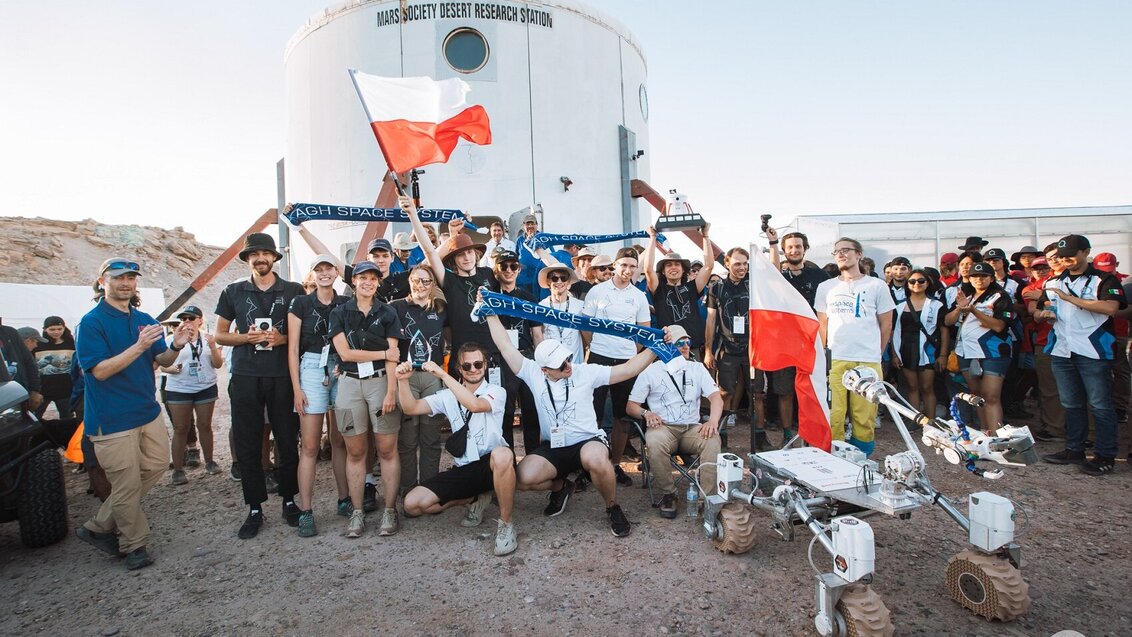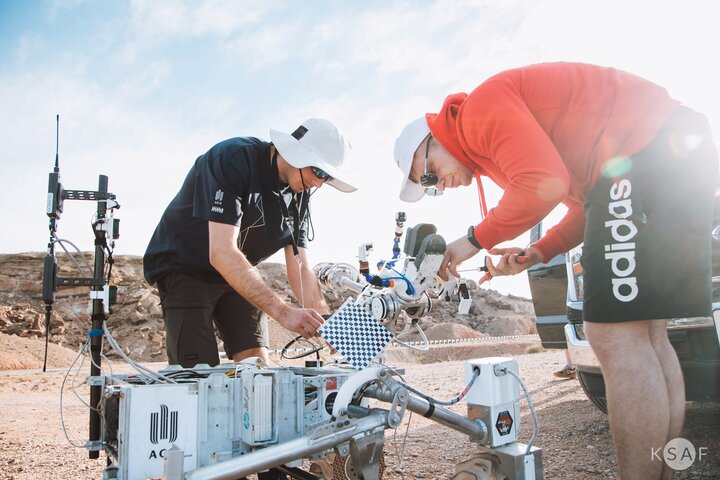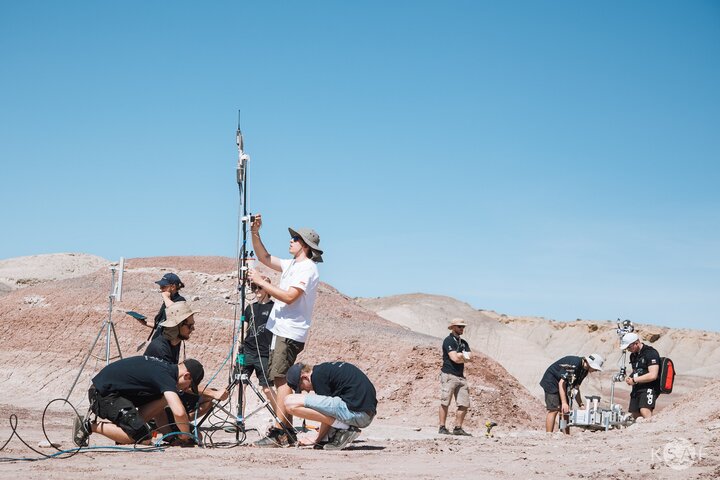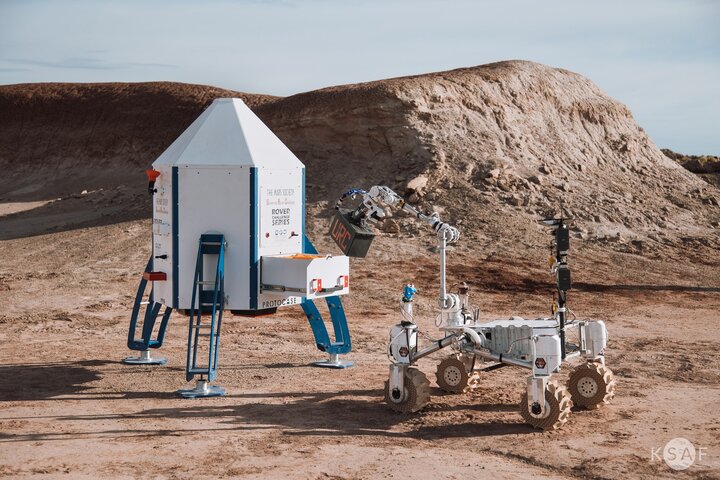
Photo by Katarzyna Sadowy, AGH University KSAF
For the first time ever, AGH Space Systems with Kalman took the highest spot on the podium of the University Rover Challenge in the USA. The rivalry was off the charts – our team defeated the last year’s winner by less than one point. The final has seen the best 38 student teams of the 102 applying from all over the world.
The University Rover Challenge, one of the largest and most prestigious robotic competitions, took place on 29 May – 1 June 2024 on the premises of the Mars Research Desert Station in Utah.
The student teams competed in 4 missions, each of them corresponding to tasks faced by a Martian rover during real-life interplanetary missions.
The Science Mission consisted in taking some samples of the soil and rocks with the use of a drill and then in examining them for any signs of life in a mobile chemistry lab placed on the rover. Then, the teams had to present their research hypotheses, explain their methodology, and answer questions on research missions on Mars, astrobiology, and planetology.
The Equipment Servicing Mission checked the precision of the rover’s manipulator and its operators. The participants used the manipulator to perform manual operations on a special panel and delivered the box to a designated place. The task was supposed to showcase whether the rover is able to replace an astronaut in carrying out a corrective operation.
The Autonomous Navigation Mission consisted in traversing difficult Martian terrain in autonomous driving mode, i.e. without operator support. On their route, there were 7 points altogether, which the rovers had to approach at a certain distance, stop, and then signal their arrival.
During the Extreme Delivery Mission, the teams were requested to perform a few activities related to finding and transporting indicated objects and tools. The challenging terrain the rover had to traverse tested the efficiency of the operators and the durability of the vehicle’s mechanism.
The best three teams at the URC 2024
- AGH Space Systems with 392.76 points
- Team Mountaineers (West Virginia University, USA) with 391.80 points
- BYU Mars Rover (Brigham Young University, USA) with 374.24 points
To enter the challenge, it was required for the AGH University students to adapt Kalman. New components and improvements were installed, such as a mobile laboratory, a drilling module, a spectometre, neural networks trained to detect objects, as well as advanced vision and navigation systems. Moreover, hours-long trainings and tests went into the preparation.
“In each mission, our team has displayed high level of competence and technical knowledge. Good performance in all four missions translated into the great, historical result. We are particularly enthusiastic about the almost perfect result in the qualifications to the finals for the technical documentation of the project and obtaining the most points in a truly demanding autonomous drive on a demanding Martian-like surface,” says the representation of AGH Space Systems. “We would like to express how thankful we are to those who supported us at the preparation stage and made it possible for us to achieve such an amazing result.”
Photos by Katarzyna Sadowy, AGH University KSAF






 AGH University Alumni Day 2024
AGH University Alumni Day 2024  Projects by AGH University Main Library with funding from Scientific Social Responsibility programme
Projects by AGH University Main Library with funding from Scientific Social Responsibility programme  Honouring those we lost this year
Honouring those we lost this year  On energy transformation and more. Distributed Energy Congress
On energy transformation and more. Distributed Energy Congress  Space Technology Centre in newly-established Polish Partnership for Earth Observation
Space Technology Centre in newly-established Polish Partnership for Earth Observation  AGH University to establish AI Factory
AGH University to establish AI Factory 

